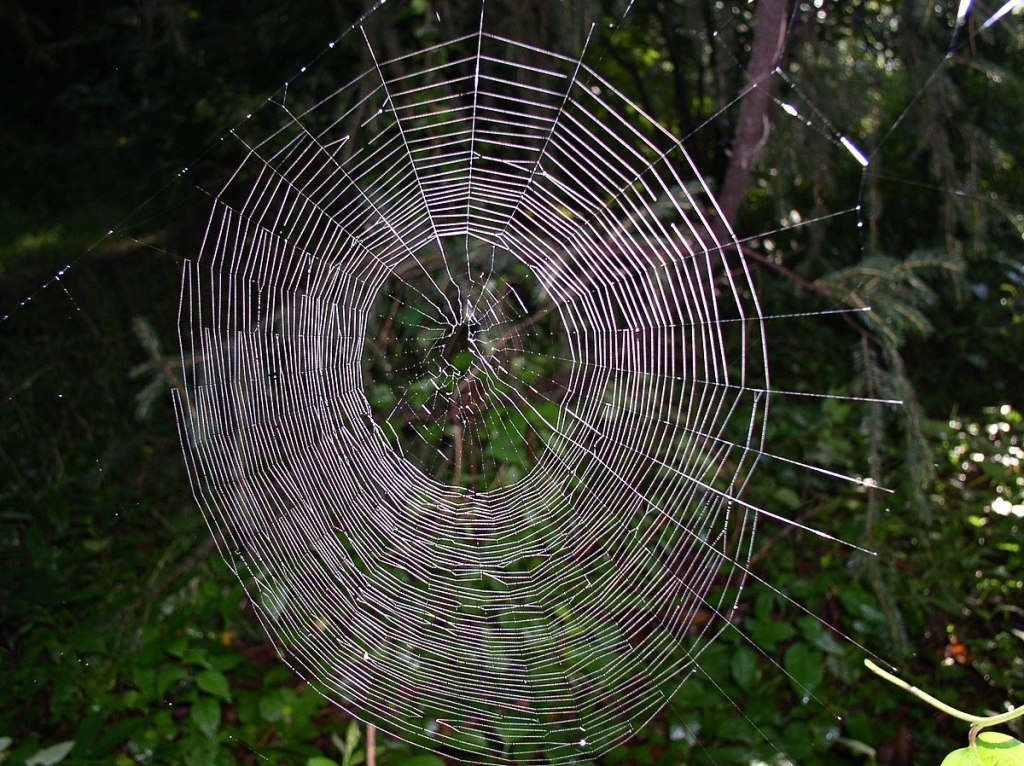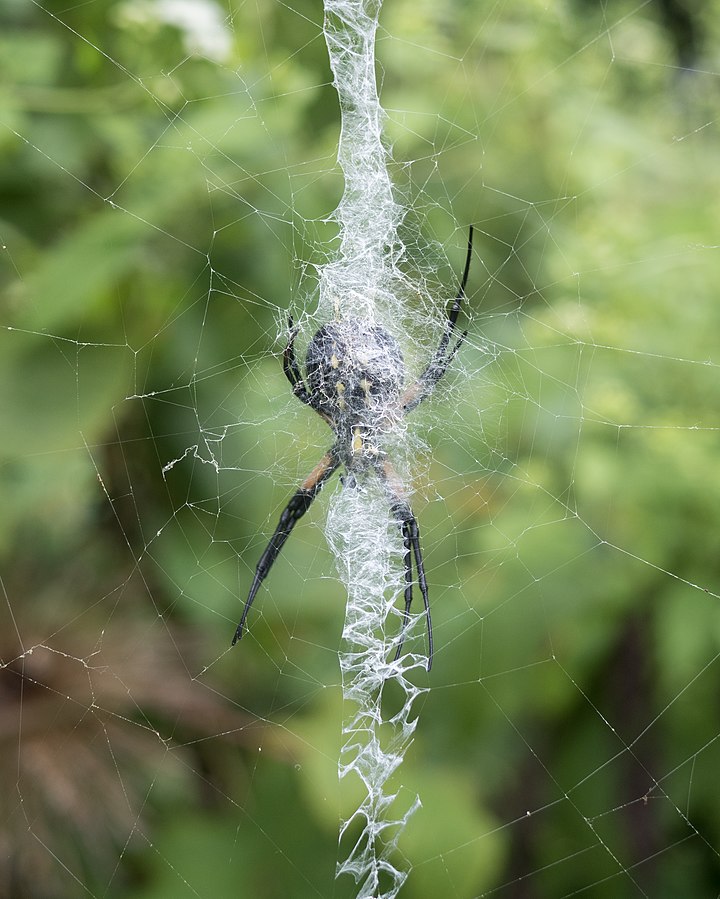Malevolent, scheming, horrid, wretched, malignant, hideous, and nasty. When you google words for spiders, these are what come up. Spiders need a good PR firm.
I find the distain for spiders interesting, given that one of the most beloved children’s books of the past two generations is E.B. White’s Charlotte’s Web. This could be a learned behavior. White wrote:“I think it is too bad that children are corrupted by their elders in this hate campaign. Spiders are skillful, amusing, and useful, and only in rare instances has anyone come to grief because of a spider.”
Now is the time of year when we often see orb-weaver spiders of the family Araneidae, the third largest of the spider clan. The Barn Spider (Araneus cavaticus) likes to build webs around human structures. This is the species White noticed in his barn in Maine and whose egg case he brought back to his apartment in New York City.

The Black and Yellow Argiope or Yellow Garden Spider (Argiope aurantia) is a common and sizeable orb weaver often seen in meadows. Although large, it is not aggressive and will only bite if grabbed or stepped on. Its bite is like a bee sting. Once mated, the female Argiope produces a ball-shaped egg sac that is up to an inch (2.5 centimeters) in diameter. She’ll guard her eggs on her web as long as she can through the fall, when she’ll die. Come spring up to 1,000 spiderlings will hatch. They will spin a long strand of silk that catches in the wind and so disperse. This is called ballooning and spiderlings have been known to be taken into the jet stream. They have been detected by weather balloons collecting air samples at 16,000 feet (5 kilometers)!

When people think of spider webs, they usually have in mind webs from orb weavers. Each evening these spiders consume their old web, then make a fresh one by spinning a strand of silk that floats to a nearby shrub or other surface. The spiders drop a line from the center, making a “Y,” then create “spokes” of plain silk and concentric rings of sticky silk. The non-sticky spokes let them travel around their web more quickly to subdue prey. Try touching the spokes and rings sometime to feel the difference.

Spider silk has extremely strong tensile strength, comparable to steel. We humans have put that strength to use in many ways. Spider silk has been used as crosshairs in telescopes, microscopes, and telescopic rifle sights. Different methods of producing spider silk, such as combining with silk from silkworm moths, has created such products as ballistics armor, athletic footwear, personal care products, breast implant and catheter coatings, insulin pumps, and outerwear.
When an insect flies into a web, orb weaver spiders bite their prey, inject venom, then use silk to wrap the prey. They also spin a zigzag pattern of silk, called a stabilimentum, in the center of the web. There is debate about the purpose of this. Possibly it’s meant to warn birds away from the web, as a lure for prey, or to decrease the visibility of the web to insects, making it harder for prey to avoid the web.

Orb weavers and other spiders are important in ecosystems. They not only prey on species we consider to be garden pests, but in turn they are food for many other species. For example, much of the diet of Ruby-throated Hummingbirds (Archilochus colubris) includes spiders. Ruby-throats use spider silk to weave lichen into their nests.
Give spiders a chance—they are amazing creatures. And as my wife will avow—anything that eats mosquitoes is OK.
Great, Jim!
Thanks
LikeLike
Thanks Rick!
LikeLike
This was a fascinating little read, Jim, thank you! I never knew about those non-sticky spokes; I look forward to feeling the difference the next time I come across an orb weaver web. And I am definitely in agreement with you and E.B. White; there are far too many amazing species out there that are wrongfully maligned!
LikeLike
Thx Daniel! Really appreciate it.
Cheers,
Jim
LikeLike
I love this one. I learned so many new things. Incorporating this into my homeschooling week as part of our nature exploration. Thanks!
LikeLike
Dear Tami, I just noticed that I didn’t reply to your comment. Glad you were able to use some info about spiders with your homeschoolers
LikeLike
Hi Jim! That was wonderful. I shared it with a little girl who named all the spiders in my backyard last year. She loves them . I hope she learns a lot from it. Keep up the good work! I’m really impressed! Yours, Wiz
LikeLike
Dear Wiz, great to hear from you and thx for your kind words! Hope all is well.
Cheers,
Jim
LikeLike
Yes, all is well. I sent you a message on Facebook. Did you get it?
LikeLike